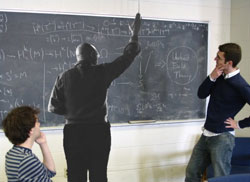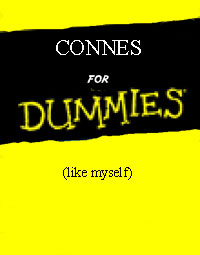(via the Arcadian Functor) At the time of the doing the Perelman-post someone rightfully commented that “making a voluntary retreat from the math circuit to preserve one’s own well-being (either mental, physical, scientific …)” should rather be called doing the Grothendieck as he was the first to pull this stunt.
 On Facebook a couple of people have created the group The Petition for Alexander Grothendieck to Return from Exile. As you need to sign-up to Facebook to use this link and some of you may not be willing to do so, let me copy the description.
On Facebook a couple of people have created the group The Petition for Alexander Grothendieck to Return from Exile. As you need to sign-up to Facebook to use this link and some of you may not be willing to do so, let me copy the description.
Alexander Grothendieck was born in Berlin, Germany on March 28, 1928. He was one of the most important and enigmatic mathematicians of the 20th century. After a lengthy and very productive career, highlighted by the awarding of the Fields Medal and the Crafoord Prize (the latter of which he declined), Grothendieck disappeared into the French countryside and ceased all mathematical activity. Grothendieck has lived in self-imposed exile since 1991.
We recently spotted Grothendieck in the “Gentleman’s Choice” bar in Montreal, Quebec. He was actually a really cool guy, and we spoke with him for quite some time. After a couple of rounds (on us) we were able to convince him to return from exile, under one stipulation – we created a facebook petition with 1729 mathematician members!
If 1729 mathematicians join this group, then Alexander Grothendieck will return from exile!!
1729 being of course the taxicab-curve number. The group posts convincing photographic evidence (see above) for their claim, has already 201 members (the last one being me) and has this breaking news-flash
Last week Grothendieck, or “the ‘Dieck” as we affectionately refer to him, returned to Montreal for a short visit to explain some of the theories he has been working on over the past decade. In particular, he explained how he has generalised the theory of schemes even further, to the extent that the Riemann Hypothesis and a Unified Field Theory are both trivial consequences of his work.
You know what to do!
2 Comments You may not have noticed, but the really hard work was done behind the scenes, resurrecting about 300 old posts (some of them hidden by giving them ‘private’-status). Ive only deleted about 10 posts with little or no content and am sorry I’ve self-destructed about 20-30 hectic posts over the years by pressing the ‘delete post’ button. I would have liked to reread them after all the angry mails Ive received. But, as Ive defended myself at the time, and as I continue to do today, a blog only records feelings at a specific moment. Often, the issue is closed for me once Ive put my frustrations in a post, and then Ill forget all about it. Sadly, the gossip-circuit in noncommutative circles is a lot, a lot, slower than my mood swings, so by the time people complain it’s no longer an issue for me and I tend to delete the post altogether. A blog really is a sort of diary. For example, it only struck me now, rereading the posts of the end of 2006, beginning of 2007, how depressed I must have been at the time. Fortunately, life has improved, somewhat… Still, after all these reminiscences, the real issue is : what comes next?
You may not have noticed, but the really hard work was done behind the scenes, resurrecting about 300 old posts (some of them hidden by giving them ‘private’-status). Ive only deleted about 10 posts with little or no content and am sorry I’ve self-destructed about 20-30 hectic posts over the years by pressing the ‘delete post’ button. I would have liked to reread them after all the angry mails Ive received. But, as Ive defended myself at the time, and as I continue to do today, a blog only records feelings at a specific moment. Often, the issue is closed for me once Ive put my frustrations in a post, and then Ill forget all about it. Sadly, the gossip-circuit in noncommutative circles is a lot, a lot, slower than my mood swings, so by the time people complain it’s no longer an issue for me and I tend to delete the post altogether. A blog really is a sort of diary. For example, it only struck me now, rereading the posts of the end of 2006, beginning of 2007, how depressed I must have been at the time. Fortunately, life has improved, somewhat… Still, after all these reminiscences, the real issue is : what comes next?